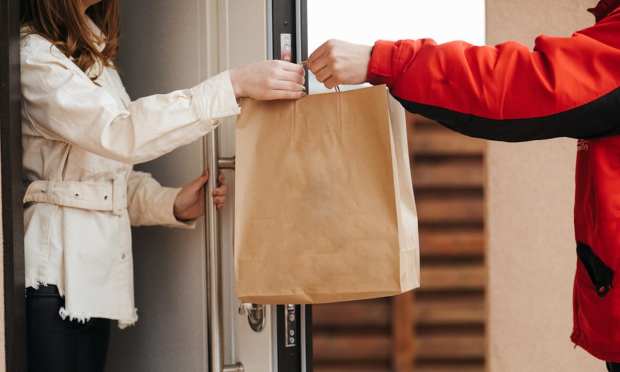Hungr’s Virtual Kitchens Highlight Potential Of Restaurant Aggregator Data

Restaurant aggregators are uniquely positioned to collect troves of data on consumer behavior, gathering information about, among other habits, which kinds of foods are the most in-demand in each area. Now, delivery platform Hungr is putting that data to use, to both drive profits and offer a service to its restaurant partners, reports Restaurant Business. The company is launching eight Hungr Kitchen virtual restaurants, available only for delivery through Hungr. The brands, which include a pizzeria, multiple burger restaurants and a waffle shop, use artificial intelligence (AI) to optimize marketing and to streamline operations.
Hungr will take a large cut from each sale made through these virtual kitchens, 60-70 percent rather than its usual 12 percent. For this steep cut, the service offers, per the Hungr Kitchen site, “brand, menu and recipe [and] all the sourcing and AI technology needed to operate, along with in-house delivery service.” Host restaurants, meanwhile, provide the space, equipment and labor.
“These brands are complements of your existing restaurant rather than competition to it,” the site explains. This may be promising more than Hungr can deliver (no pun intended) — it is for the market to say whether the brands are complements or competition, especially when Hungr has the data available to optimize its offerings to consumers’ appetites. That said, one of the features that sets Hungr apart for its restaurant partners is its data sharing, according to Food on Demand. Its Insights feature allows restaurants to access the same kind of metrics that the company used to create its virtual brands.
These virtual kitchens call on other aggregators to ask, “How else can we be using our data?” DoorDash has offered its own answer to this question with its dark convenience stores, which are online-only C-stores that use the company’s drivers to offer same-day essential deliveries. Uber Eats has launched its own suite of ghost kitchens, though it has not codified that business into a widely available, systemized network the way Hungr has. Grubhub, in response to demand from restaurants, began piloting an in-store pickup option last year, Restaurant Dive reported. It also launched a subscription service last year, in an effort to create loyalty in a highly competitive industry.
Leveraging consumer data to guide expansion is a logical step for third-party delivery services, but it may put aggregators’ relationships with restaurants to the test. After all, the claim that adopting the aggregator’s ghost kitchen will supplement, not compete with, the business is all well and good when these virtual kitchen sales make up a small percentage of restaurant options available — but as the aggregators use their extensive data to grow their offerings, the marketplace could start to become too crowded for independent restaurants to hold their own. Hungr’s data sharing may help ameliorate the situation somewhat, but SMBs will likely not have the means to leverage the data as effectively as larger corporations.
Meanwhile, larger restaurants such as major quick-service restaurant (QSR) chains are often able to anticipate these issues by limiting ordering to their own websites and mobile apps, avoiding partnerships with third-party aggregators. Through these apps, QSRs can maintain sole ownership of their customers’ data and optimize their own offerings. Additionally, while aggregators mediate consumers’ relationships with restaurants, controlling the consumer experience, restaurants’ own mobile apps can build deeper and more comprehensive connections with their audiences.
For restaurants without the means to create their own mobile experiences, however, third-party platforms remain key to their survival in a market where delivery is only growing. A recent study highlighted in PYMNTS’ December Mobile Order-Ahead Tracker found that digital orders will make up 54 percent of QSRs’ sales by 2025, marking a 70 percent increase over the values outlined in studies published before the pandemic’s onset. The report also found that approximately 90 percent of U.S. and Canadian restaurants now offer delivery, mostly through third-party aggregators. As aggregators and restaurants continue their tug of war for the narrow profit margins of meal delivery, with even the most popular delivery services currently operating at a loss, it remains to be seen how these new data-optimized offerings will impact their relationships with the restaurants they depend on.
